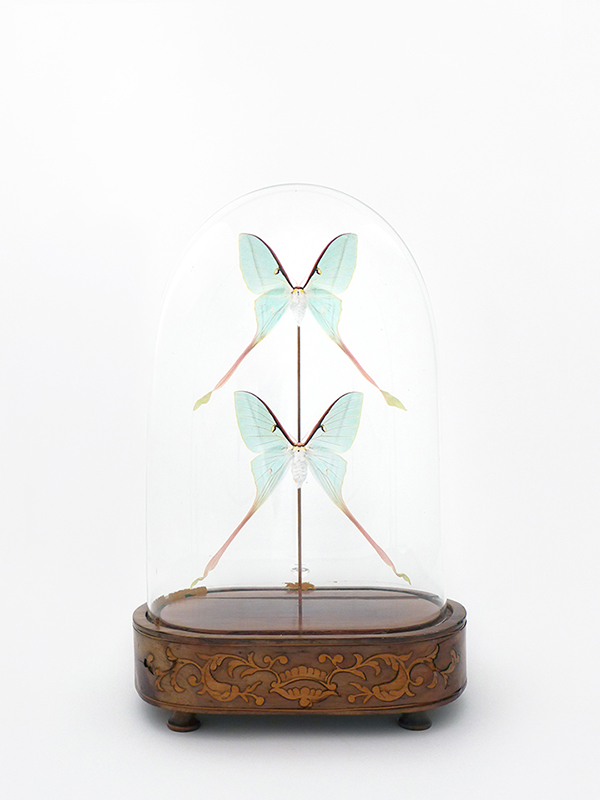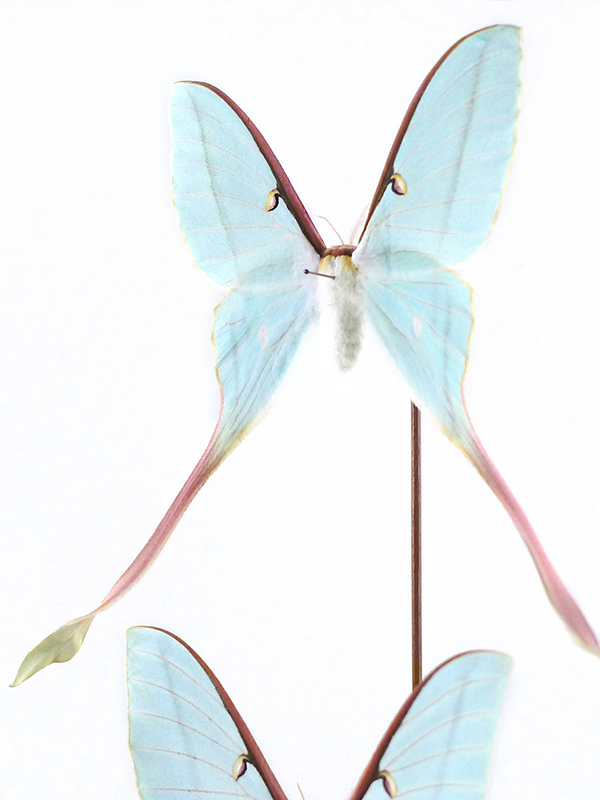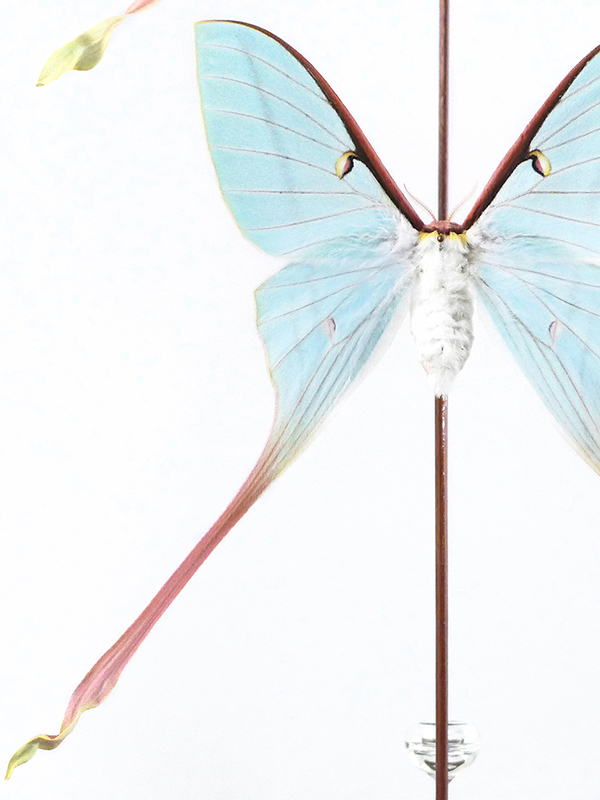Unique & Certify
Every one of our creations is unique, signed and has a certificate of authenticity.
Made by Us
All of our pieces are carefully made in our workshop with love.
RespectS Wildlife
Our works contain any protected species. All specimens come from certified breeding farms.
Lasts Forever
The insects remain intact over time and can be kept forever.
Custom-made
We can make custom-made pieces suiting your style and taste. Do not hesitate to contact us.
Guarantee
We guarantee damage-free delivery all over the world or a full refund.
SPECIES : Actias dubernadi
It takes 70–85 days to progress from an egg to the adult, depending on the temperature and humidity. It uses its colorful wings to attract its mate.
An adult moth’s life is short, no longer than 10 to 12 days (females live longer due to their fat reserves). Pairing is easy in a medium-sized cage. A beautiful hybrid with Graellsia isabellae was obtained by a team of French entomologists (D. Adés, R. Cocault, R. Lemaitre, R. Zaun and R. Vuattoux).
GENUS : Actias
The majority of species in this genus feed on the leaves of sweetgum, pine, or similar trees. As with all Saturniids, adult Actias moths lack functional mouthparts so their lifespan after emergence from the cocoon only ranges from a few days to a week.
Read more on Wikipedia
FAMILY : Saturniidae
Adults are characterized by large, lobed wings, heavy bodies covered in hair-like scales, and reduced mouthparts. They lack a frenulum, but the hindwings overlap the forewings to produce the effect of an unbroken wing surface.[2] Saturniids are sometimes brightly colored and often have translucent eyespots or “windows” on their wings.
Most adults possess wingspans between 1-6 in (2.5–15 cm), but some tropical species such as the Atlas moth (Attacus atlas) may have wingspans up to 12 in (30 cm). Together with certain Noctuidae, Saturniidae contains the largest Lepidoptera and some of the largest insects alive today.
ORDER : Lepidoptera
Well-known groups of Lepidoptera include plume moths, hawk-moths, loopers, swift-moths, skippers, butterflies, tiger moths, grass moths, clearwing moths, clothes moths and burnet moths. Worldwide there are around 160,000 known species in 120 families; in Britain there are about 2,570 species in 72 families.





